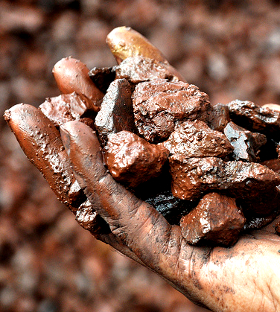Roy Hill's green light beams with $7.2 billion bulb
 The biggest mining project in Australia is now locked in, with Gina Rinehart securing a $7.2 billion deal for work at Roy Hill.
The biggest mining project in Australia is now locked in, with Gina Rinehart securing a $7.2 billion deal for work at Roy Hill.
The deal itself has been touted as the largest such finance package for a mining project in the world, after it was signed-off following 18 months of negotiation.
The iron ore project at Roy Hill has been backed by a massive cash injection from a multi-national group of lenders including some Australian banks.
Five separate export credit agencies and a consortium of 19 commercial banks from Australia, Japan, Europe, China, Korea and Singapore have come together to fill the funding pool. Australian lenders include National Australia Bank, ANZ, Westpac and the Commonwealth Bank.
“The project has strong partners with international experience in finance, engineering, construction, marketing and logistics, which has assisted in the attraction of support from the international finance community” Roy Hill chair Ms Rinehart said.
Roy Hill chief executive Barry Fitzgerald says it is now one of the biggest projects on the planet.
“The structure and quality of the project has allowed us to secure an internationally competitive cost-effective funding structure which can endure market fluctuations,” Mr Fitzgerald said.
The combined rail, mine and port project aims to export 55 million tonnes of iron ore per year when it hits production next year.
Work is already about 30 per cent complete at the Roy Hill site, with early backers putting in about $3 billion so far.
More than 2,500 people work on the construction of the mine, with the newly-secured funds set to boost that number by some thousands more.
With the kitty now formalised, Rinehart says “crucible of opportunity” the project provides can now be fired up.
Insiders expect Chinese steel production will remain high enough to justify the project for at least a decade, though some say they expect prices will be volatile, and are as likely to dip as they are to lift in the long term.
There has been plenty of concern around recent reports that China is looking to reduce its manufacture of steel due to massive iron ore stockpiles, but this has not been enough to sway the international backers from pouring billions into the effort.
"The longer term is still intact. I can’t see any change to forecasts. I expect volatility on a regular basis, but the longer term is still intact,” Rio Tinto iron ore chief executive Andrew Harding said of the steel price.
“It has already shown it will create new jobs, and benefit the greater mining and construction related industries, it will add to Australia’s exports, and significantly benefit our West Australian and national economy,” Rinehart said in a statement.








 Print
Print